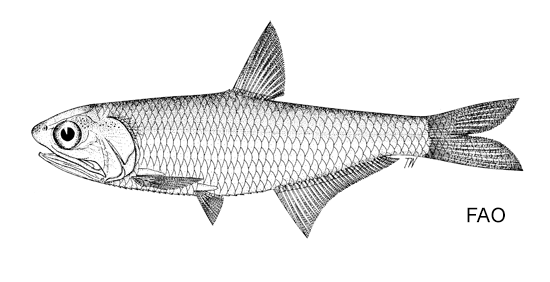| Engraulidae (Anchovies), subfamily: Coiliinae |
| 12 cm SL (male/unsexed) |
|
pelagic; freshwater |
| Oceania: known only from the Fly River, Papua New Guinea. |
|
Dorsal spines (total): 0-0; Dorsal soft rays (total): 12-13; Anal spines: 0-0; Anal soft rays: 29-36. Belly with 17 to 19 + 10 or 11 = 27 to 29 keeled scutes from isthmus to anus. Maxilla short, not quite reaching to hind border of pre-operculum; first supra-maxilla short, not more than half length of second. No black area behind upper part of gill opening. |
| Inhabits turbid channels of large rivers, also lakes and swampy backwaters (Ref. 2847). The very high number of gillrakers suggests filter-feeding habit (Ref. 189). Feeds on plankton including calanoid copepods (Ref. 2847). |
|
Endangered (EN); Date assessed: 17 July 2017 (B1ab(i,ii,iii,v)+2ab(i,ii,iii,v)) Ref. (130435)
|
| harmless |
|
Source and more info: www.fishbase.org. For personal, classroom, and other internal use only. Not for publication.

